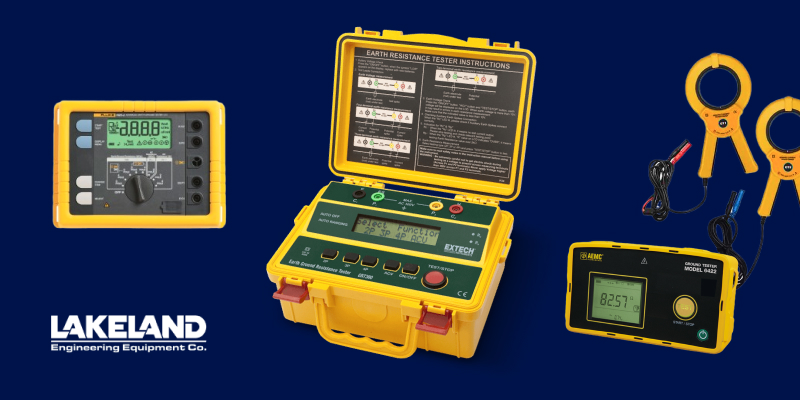
Ground Resistance Tester: A Simple Guide to Electrical Safety Testing
- By Marketing
Every industrial facility depends on proper electrical grounding to keep workers safe and equipment running. A ground resistance tester is the tool that makes sure your grounding system is doing its job correctly.
Think of grounding like a safety valve for electricity. When something goes wrong, the grounding system provides a safe path for electrical current to flow into the earth instead of through your equipment or worse, through people.
What Is a Ground Resistance Tester?
A ground resistance tester measures how well your grounding system connects to the earth. It gives you a number in ohms that tells you if your ground is good or needs attention.
The lower the number, the better. Most facilities need to keep ground resistance below 25 ohms to meet safety codes. Some sensitive equipment needs even lower readings.
An earth ground resistance tester does the same thing—it’s just another name for the same tool.
Why Ground Resistance Testing Matters for Industrial Facilities
Safety Compliance: The National Electrical Code (NEC) and OSHA regulations require grounding systems to maintain resistance values typically below 25 ohms for most applications, with stricter requirements for sensitive electronic equipment.
Equipment Protection: Proper grounding prevents voltage surges from lightning strikes and electrical faults from damaging expensive automation equipment, PLCs, and motor controls.
Personnel Safety: Effective grounding systems ensure that fault currents flow safely to earth rather than through workers or equipment operators.
Predictive Maintenance: Regular testing identifies deteriorating ground connections before they fail, supporting reliability-centered maintenance strategies and reducing unplanned downtime.
Key Features to Consider in an Earth Ground Resistance Tester
When selecting a ground resistance tester for your facility, consider these essential features:
Testing Methods: Instruments offering multiple testing methods—2-pole, 3-pole, 4-pole, and stakeless provide flexibility for different site conditions and applications.
Measurement Range: Industrial facilities typically need testers capable of measuring from 0.01 ohms to several thousand ohms to accommodate various grounding system types.
Data Storage: Models with built-in memory and USB connectivity streamline documentation for compliance auditing and trend analysis.
Environmental Ratings: Industrial-grade testers should meet IP65 or higher ratings for dust and moisture protection in harsh plant environments.
When to Test Your Ground Resistance Tester
Test your grounding systems at least once a year. Some situations call for more frequent testing:
- Facilities in corrosive soil conditions
- Areas with frequent lightning activity
- Critical operations that can’t afford downtime
- After any work on the electrical system
Test during dry weather when possible. Wet soil gives artificially low readings that look good but don’t reflect worst-case conditions.
Getting Started with Testing
You don’t need to be an electrical engineer to use a ground resistance tester, but basic electrical safety training is essential.
Start by identifying all grounding points in your facility. Create a simple testing schedule. Document every reading with the date, location, and weather conditions.
Compare new readings to your baseline measurements. Small changes are normal, but significant increases in resistance signal problems that need attention.
Making Testing Part of Your Routine
The best approach is to make ground resistance testing part of your regular maintenance program. Schedule it during planned shutdowns when possible.
Train several team members on proper testing procedures. Keep your tester calibrated and ready to use. Store test records where they’re easy to find during audits.
Many newer earth ground resistance testers connect to your phone or computer via Bluetooth. They upload results automatically to your maintenance software, making documentation effortless.
The Bottom Line
Ground resistance testing isn’t complicated, but it’s crucial. These simple measurements verify that one of your most important safety systems is working properly.
Regular testing with a quality ground resistance tester gives you confidence that your facility is protected, your team is safe, and you’re meeting all regulatory requirements.
At Lakeland Engineering, we help industrial facilities maintain safe, compliant electrical systems. Proper grounding and regular testing form the foundation of electrical safety in any plant or facility. Our team can guide you through making the best choice for your requirements.
